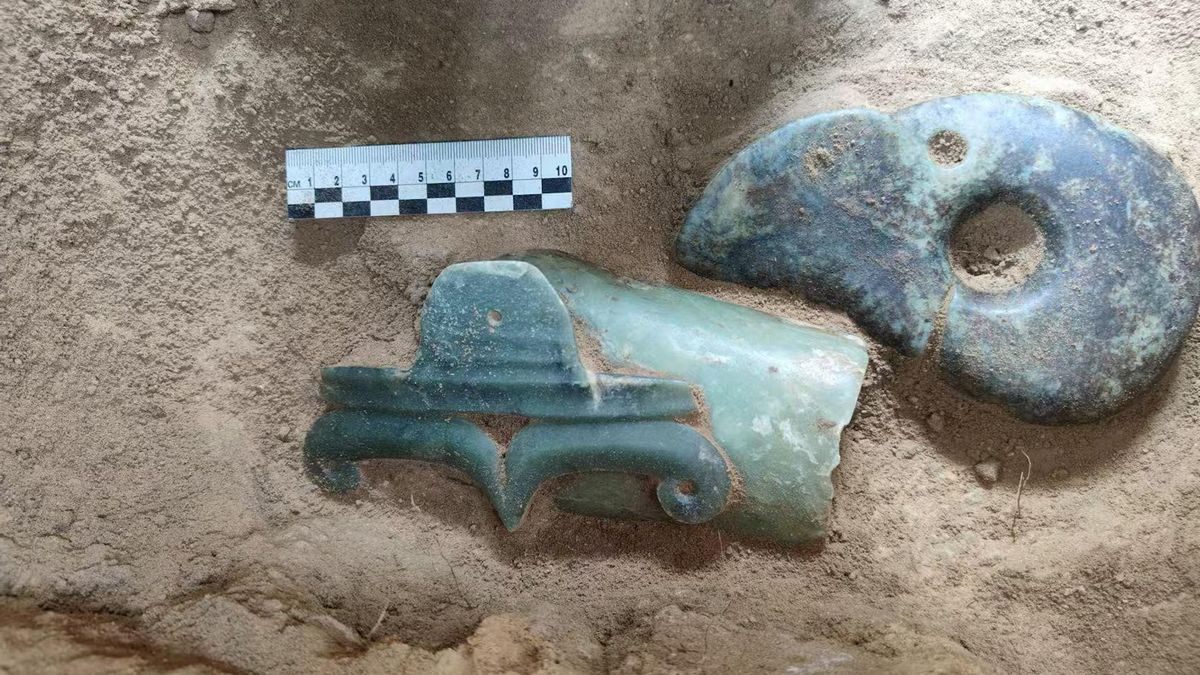
Basement renovation in home near Paris unearths cemetery spanning 700 years, with Roman-era graves
The ancient graves were found in the basement of a house in a southern suburb of Paris that is thought to have been built on the site of a medieval chapel.
During a basement renovation project, a homeowner near Paris unexpectedly unearthed a skeleton. The discovery eventually led to the excavation of a cemetery where dozens of people were buried, some of them up to 1,700 years ago.
The oldest grave dates from the third century A.D., during the Late Roman period ; and 10 plaster sarcophagi date from the early Merovingian period of Frankish rule, which lasted from roughly 476 to 750.
The most recent grave dates to about the 10th century, which indicates that the cemetery was in use for about 700 years.
Archaeologists originally thought the site was an early medieval graveyard because a seventh-century chapel had once stood in the area. So the existence of even older graves was unexpected, according to a translated statement from the French archaeology company Archaeodunum , which is carrying out the excavations on behalf of regional authorities.
The homeowner found the first grave this past winter, and archaeologists have now unearthed 38 graves there in a four-room area covering 560 square feet (52 square meters).
Related: Ancient necropolis unearthed just feet away from bustling Paris train station
Image 1 of 3 The first skeleton was found in the basement of the house by the homeowner during renovations several months ago. (Image credit: Archeodunum) Archaeologists have now unearthed 38 skeletons from the basement, dating from the third century to the 10th century. (Image credit: Archeodunum) Many of the graves date from the Merovingian period from the fifth to the eighth centuries. The dead at this time were placed in plaster sarcophagi. (Image credit: Archeodunum)
Medieval chapel
The house in the Montconseil district of Corbeil-Essonnes, a commune in the southern suburbs of Paris, is thought to have been built at the site of the medieval Notre-Dame-des-Champs chapel, which in turn is said to have been built above an even older pagan temple honoring a spring.
Sign up for the Live Science daily newsletter now Get the world?s most fascinating discoveries delivered straight to your inbox. Contact me with news and offers from other Future brands Receive email from us on behalf of our trusted partners or sponsors
Early medieval graves have been found nearby before this, but no trace of the chapel or temple has been discovered. This is the first time that the chapel's cemetery has been studied, according to the statement.
Although the basement site included several outcrops of rock, most of the graves were arranged in parallel rows. The dead from the Roman period had been buried on their backs in wooden enclosures that have since rotted away. But the 10 dead people in the Merovingian graves were buried in distinctive plaster sarcophagi, arranged side by side in a fan-shape, the statement said.
One sarcophagus was originally covered by a shaped stone block, now in pieces, that seems to have had a rosette and two crosses carved into its surface. The archaeologists said such motifs were common on Merovingian sarcophagi, as well as outside places of Christian worship at this time.
Image 1 of 2 Archaeologists have now found the graves of 38 people in the four-room basement. Other burials had previously been found nearby. (Image credit: Archeodunum) One of the Merovingian sarcophagi was covered with a stone block that is now in pieces. It was carved with the emblem of a rosette and two types of crosses. (Image credit: Archeodunum)
Ancient burials
Merovingian sarcophagi from other sites are sometimes decorated and often contain the remains of several people. But most of the sarcophagi at Corbeil were undecorated and each held only the remains of a single person, the statements said.
The age of the oldest graves indicate that people were buried at the site long before the medieval chapel was built there.
The skeletons will now be analyzed in a laboratory. The archaeologists hope to determine the sexes and ages of the buried people and any indications of their living conditions, the statement said, such as their health at death and their general diet.
The archaeologists hope the burial ground will give them a better understanding of the population that lived near the site during Late Antiquity and the Middle Ages, and how their funeral traditions changed over time.






